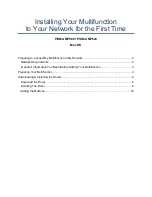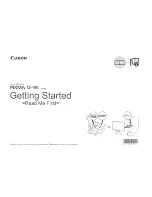
Connecting your printer
Caution:
Limit electrical power supplied to the printer to 24 v DC. Limit
excess current draw to 16 amps or less, using an associated circuit breaker or
other such device. Never operate the printer in a location where operator,
computer, or printer can get wet. Personal injury could result. The printer must be
connected to an earthed electrical power supply and properly protected against
electrical surges and grounding faults. The power supply pack can only be replaced
by the same product from the manufacturer.
1.
Place the printer in a location that allows easy
access to all sides. The printer should never be
operated while resting on its side or upside down.
2.
Remove the yellow CAUTION label from the
back of the printer.
3.
Ensure that the printer’s power switch
in the OFF (O) position.
4.
Insert the power supply plug into the power
socket, attach the power cord (120v or 230v)
to the power supply, then plug the power cord
in to a grounded electrical socket of the proper
voltage and type.
5.
Attach USB cable to printer and computer.
Note:
If your printer has the optional Ethernet interface,
connect the Ethernet cable to the printer and to the
Ethernet network.
Important:
Do not connect the USB and Ethernet interfaces at the same time.
6.
Place the printer’s power switch in the ON (|) position.
The Found New Hardware window will open.
Caution:
Intermittent or unpredictable operation may occur from unsecured
connectors. If damaged, the power cable must be replaced by an exact equivalent.
The socket should always be easily accessible to power off the printer.
15
USB PORT
POWER SWITCH
POWER SOCKET
ETHERNET PORT
















































